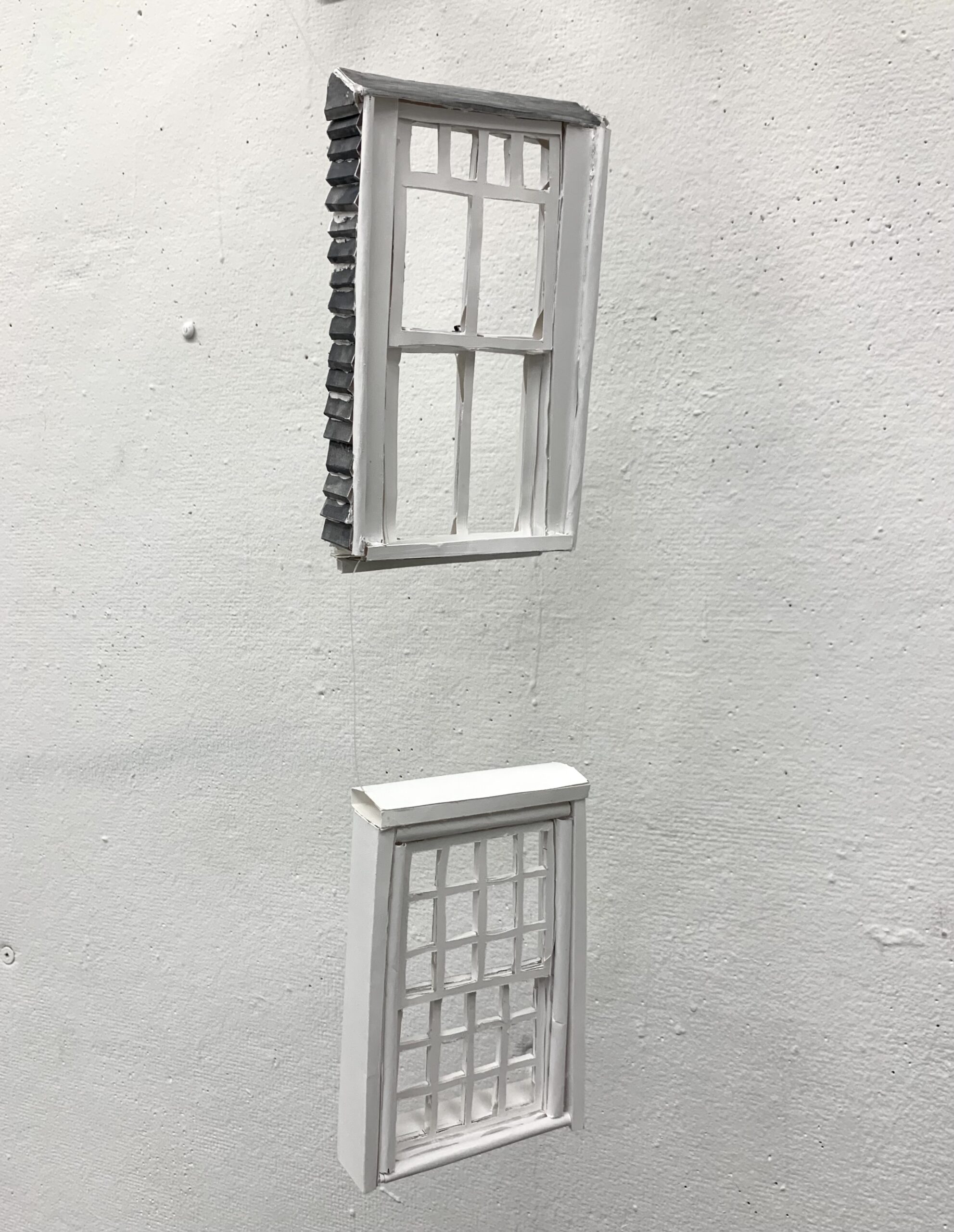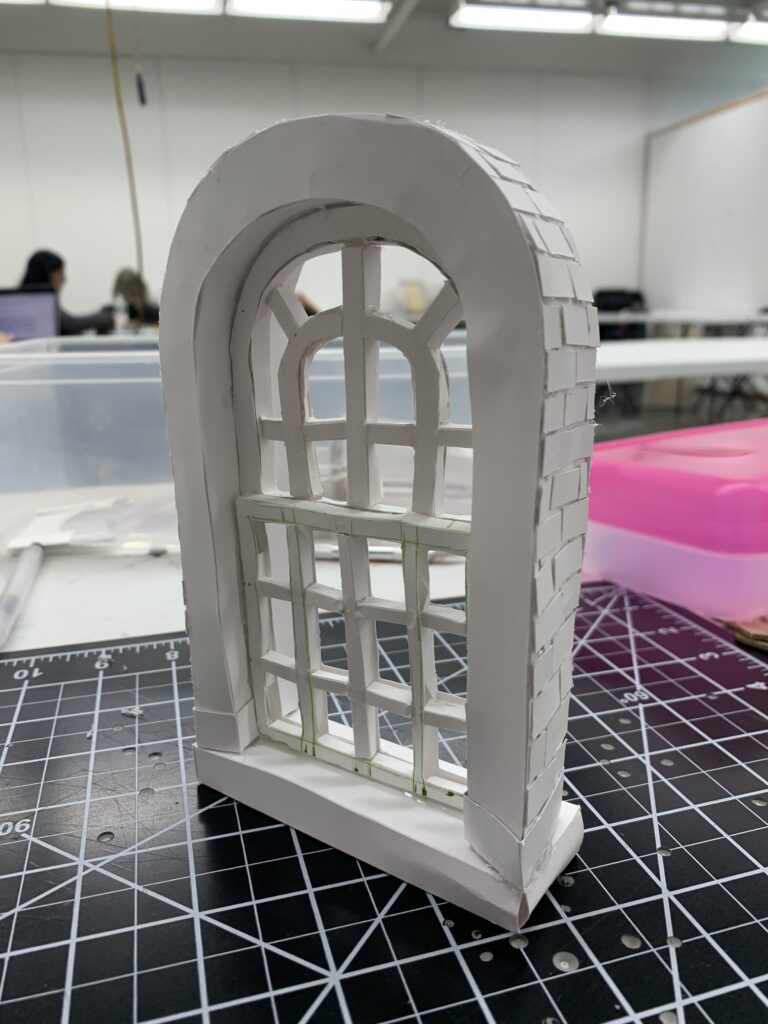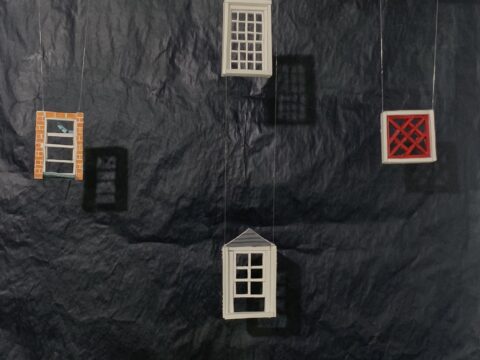This is a work in progress of my conference project, Panes of Perception. The project is a collection of intricate 3D paper models of windows I have encountered in life, on FaceTime, and in memory throughout the past couple of months. They will be installed using transparent filament hung from white brackets to give the effect that they are floating in mid-air.

Creating these windows was an instinctual impulse, and I have had to inspect my own reasoning for exploring this subject. Windows are already rich with metaphorical meaning. We often look through windows as opposed to at them. When I think of the windows that have become fixtures in my memories, it is because of what I saw on the other side of the panes that they become special in this way. I can remember counting the cars that passed under my childhood bedroom window, and the field hockey team that I could see practicing outside of my dorm room. Windows have always been like a sort of cradle, a perch from which I can observe and make sense of the world. We associate windows with observation, often forgetting that glass is transparent in both directions. My project is about the art of noticing, and my sustained attention on an object that is so common, yet seldom seen.

Each window is made only out of paper, glue, and paint for decoration. I explored various techniques for creating the windows, and settled on scoring the paper in such a way that I can construct each pane out of a single piece of paper, giving it more structural integrity. Creating curved panes has been a challenge, but the paper is easily enough manipulated that I can create smooth curving structures. Every window is different from the last and each requires a different combination of 3D geometric shapes. Generally speaking, each window is made from the inside out, starting with the central panes, and working my way out to the molding.

While the windows have a diaristic nature and are personal to my life, to me the project is primarily a continued exploration of space and shape. When I project light through the windows, I hope the shadows will allude to an unseen space on the other side of the windows. I am trying to alter the viewers point of view, making them feel larger next to such small windows, disrupting their usual perception of the world.
